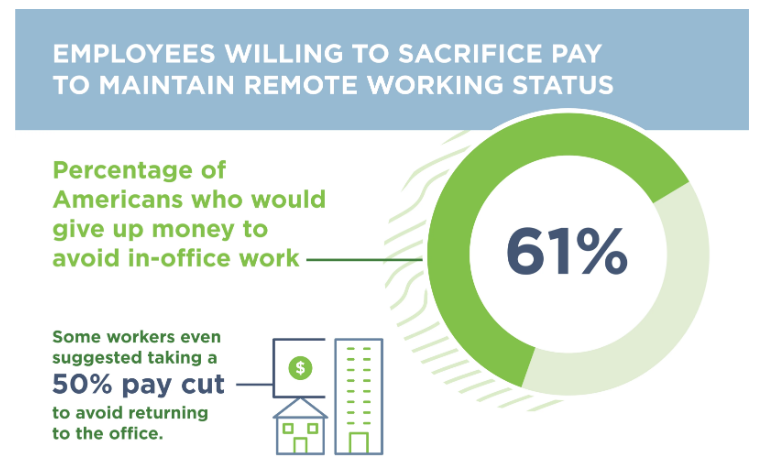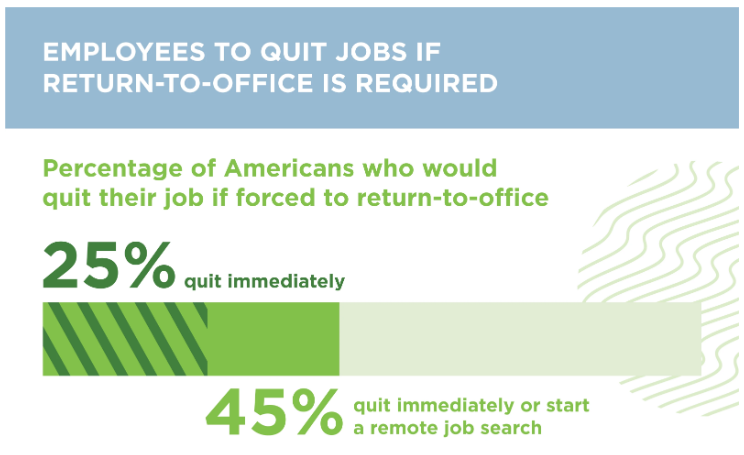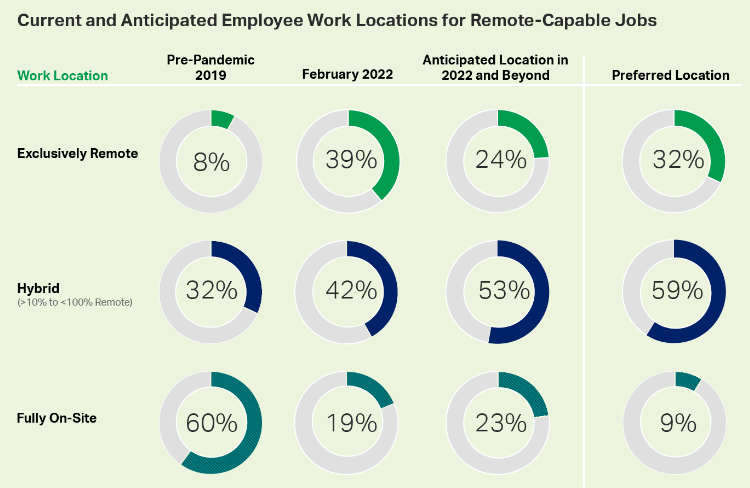Currently, the business landscape doesn’t look as it used to twenty, fifteen, and even five years ago. In the 2000s and even 2010s, many people's typical work day looked like this: they woke up, had breakfast, and went to their offices, where they spent around 8-9 hours per day. They had meetings in conference rooms, drank coffee with colleagues, and sometimes had corporate parties.
Today all this sounds weird to many of us (especially those who work in the IT industry). Many specialists work remotely and sometimes even do not know where the physical office of their company is located. That’s our reality. But together with all the benefits, it has brought us new challenges. How to build a team culture in such conditions? And is it possible to do it? Read our article to find answers to these questions.
At Geomotiv, we have strong expertise in managing remote teams, including those that were built under the principles of the dedicated software development team model, and in working with in-house employees, we’d also like to share some practical recommendations that will help you to elaborate your approach working with your staff.
What is Company Culture, and Why Do We Care about It Today?
Before understanding how to build good team culture, it is crucial to make sure that you know what it is and what it presupposes.
Some people may say all these talks about how to build culture in the workplace have no impact on actual business activities and the company's performance. However, good team culture is a vital component of the expected success of your business. According to Forbes, those companies that manage to establish an efficient culture and well-organized work processes can expect to enjoy the following benefits, including but not limited to:
- Increased revenue;
- Good net income;
- Higher retention (and consequently, a better employer’s reputation);
- Growing stock price and interest from the side of investors (if a company is publicly listed);
- Return on sales and investments;
- Better team engagement and motivation.
In other words, when a company has an excellent corporate culture, people can feel that they are a part of the team, want to be more deeply involved in all the activities, and are more interested in everything happening within the organization. Given this emotional connection to the company, it is evident that management can expect better results and higher contributions from their team.
It’s interesting to mention that according to McKinsey, companies with healthy cultures can see three times higher total returns to stakeholders.
But when trying to find out how to build a high-performance culture at your organization, it is always necessary to consider the ongoing market conditions and the work model you need to deal with.
How Has the Pandemic Affected the Work Model?
When the COVID-19 pandemic entered our lives, it seemed to turn everything upside down. As a result, many countries worldwide decided to introduce strict lockdown measures to minimize the risk of contamination and stop the spread of infection.
Companies all over the world started to look for the most efficient approaches to organize the work of their staff in new conditions. Managers had to think not only about their profits but also about the convenience of their teams.
Even before the pandemic, almost 60% of employees were unsatisfied with the conditions of their everyday work, as was revealed by Deloitte. Initially, a new remote work model wasn’t welcomed warmly. The first weeks and months were quite unstable and exhausting for employees and employers who tried to get accustomed to the new reality and redesign all the processes that had been already well-established.
Work from Home Preferences by Generation
Of course, getting used to all the changes took some time. But all the effort was worth it. The remote work model allowed companies to continue working and getting profits regardless of the epidemiological situation. Despite the negative attitude to the new model from the side of many people that was quite obvious in April-May 2020, many step-by-step teams started to notice the enormous advantages of this model.
Already in 2021, nearly 85% of Americans admitted that they prefer to apply only for those positions that include remote flexibility. And only 15% of candidates are ready to apply exclusively for those jobs that offer a full-time in-office work model.
People have more flexibility, and more time for themselves (now, they can save at least 2-3 hours daily that they used to spend on going to the office and all the related tasks). In addition, companies found a new way to reduce their expenses as there was no need to rent big offices. Moreover, different studies that were conducted in 2020-2022 demonstrated that employees' productivity is higher when they can work from home than when they can perform only from the office.
However, we must highlight that the principles of organizing work in a remote model significantly differ from those in the traditional model. That’s why, if you have never worked with remote employees, you must devote some time to studying the specificity of this approach. If you need tips on hiring and managing remote teams, please, follow this link and read the article where we shared our recommendations based on our actual practice.
But time does not stand still. Many COVID-19 measures have already been lifted. The world is learning how to live in the post-pandemic era. Many companies have decided to return to traditional in-office work, which is already quite challenging as many people want to spend less than 8 hours in the office. And working from home has become an absolute norm for them. Moreover, the co-existence of the remote and traditional work models has led to the birth of a so-called hybrid model, an entirely new phenomenon.
Hybrid Model: Gains or Pains?
The hybrid model is generally a compromise between the office and remote work. It still helps minimize risks related to the pandemic, but at the same time, it looks like a sign of normalcy. Finally, people can come to their offices, communicate with colleagues offline, and fully concentrate on their job responsibilities during work hours.
Of course, for some employees, introducing this model can bring inconveniences as their freedom of movement and mobility can be restricted by the necessity to visit the office regularly.
Nevertheless, those people who like working in the office and are tired of spending the whole day at home can be provided with this possibility.
So, while some employees may see some individual pluses and minuses of this approach, for businesses, such a model can’t have any severe disadvantages if all the processes are well-designed and smartly implemented. Moreover, thanks to a hybrid model and, consequently, to the fact that there is no need to maintain huge offices with individual desks for each employee, a company can rent a smaller office and reduce its operational expenses.
However, if you are considering a shift to a hybrid model, we recommend you bear in mind that it has some specific impact on the hiring processes.
- Those employees hired when they could work entirely remotely are unlikely to agree to work in the office (even a couple of days per week).
- As this model requires days in the office, it not only introduces some restrictions for your team but also restricts you from working with people who live all over the world. Now you can look for employees only locally.
In general, this model is worth considering these days. With the right approaches to implementation, well-set goals, and a good understanding of its peculiarities at all levels within a company, it has a future.
But as we’ve already stated, the primary condition to make it possible for a company (including employees of all levels and a management team) to enjoy the benefits that this model can offer is to organize the work properly and to ensure all the necessary tools and resources.
Challenges of Implementing a Hybrid Work Model
- Sense of belonging. One of the most severe concerns of building a corporate culture at an organization that has adopted a remote or hybrid model is creating and maintaining a sense of belonging to a team while working from home. Staying far from each other, team members often need the possibility (and necessity) to communicate. As a result, many start feeling lonely and isolated, which is quite dangerous for influential corporate culture. But that’s not the only problem with a hybrid work model.
- Lack of understanding. It can happen so that people do not clearly understand what goals the company’s management had when they approved the introduction of this model. Why is it required? What benefits can it bring? When people do not understand such things well, they may have a very negative attitude toward such a model.
- Schedule. Moreover, a hybrid work model may result in significant confusion if employees don't know when to come to the office. Therefore, the management should create a schedule available to all team members. Also, when important events (like team building or joint meetings) are planned, all the employees should know about them beforehand.
- Timetable and deadlines. Deadlines should be set as well. And when a project manager (or any other authorized person) is creating timeframes for tasks or wants to add a new meeting to the schedule, it is crucial to consider when people need to spend time going to the office.
How Do You Ensure That Your Team Works Effectively When You Have a Hybrid Model?
Now that we’ve highlighted all the significant concerns related to these new approaches to organizing work let’s proceed to the critical question. How to build a strong team culture if you have introduced a hybrid model? The tips you can find below will help you efficiently address all the main challenges that most organizations face when they decide to replace a traditional work model with an alternative option.
- Organize social events. Even if your work model doesn't presuppose gathering all together in your office simultaneously, there is still a possibility to organize corporate parties, excursions, or workshops where your employees can learn from each other better and make friends.
- Introduce a mentorship program. When you onboard a new person who will work remotely (either entirely or partially), it may turn out that this employee quickly gets lost and needs clarification due to the lack of a person who will guide them during the first weeks. A mentor can solve this problem, even if the interaction with a new employee will be organized online.
- Educate your team on the questions related to your mission and goals. The knowledge of corporate values and purposes is crucial for each employee to understand their role and contribution to the company’s everyday tasks.
- Demonstrate your appreciation and recognize good results. People should know that they are valued and that their achievements are noticed. It is important to do it publicly. For example, you can use MS Teams or Slack channels for it.
- Support cultural diversity. Even though people do not have to go to the office every day, they should still feel that they are equally respected within a team. The main thing that matters should be people’s professional qualifications. Promoting inclusion and equity is one of the top recruitment trends today. Now, you must show people that you evaluate their skills as professionals, not their age, gender, skin color, or religion. We’ve already written about it in the article on modern hiring trends. You can read this post here.
- Support cross-departmental interaction and cooperation. Of course, it is easier to do it when you have a traditional in-house work model. But if you have hybrid work, it doesn’t mean you can ignore this task. It is essential to create an interactive and involving atmosphere. You can organize virtual networking events, offer cross-functional learning opportunities, and support cross-departmental formal and informal initiatives.
- Organize regular check-ins or 1:1 video calls. Of course, team communication is essential, but it is also crucial to ensure that each employee can communicate with a manager and discuss all the pressing questions. Moreover, thanks to such calls, managers can learn more about each team member, which allows them to have a more personalized approach.
- Use employee-friendly tracking tools. Digital software tools help employees to work following their schedules without losing productivity and the quality of their work. It is recommended to use tools that will allow employees to track their time and let managers monitor their progress. Moreover, there is a growing trend that is known as asynchronous communication. It doesn’t presuppose the need to respond immediately to the sent messages. Instead, employees just get tasks and see when to fulfill them. Thanks to this approach, it is possible to organize comfortable work for all employees regardless of their time zones.
If you want to launch a software project but need more in-house resources, at Geomotiv, we will always be ready to provide you with the necessary support at any stage of app development!
Instead of a Closing Word
Of course, as you can see, implementing a hybrid model requires introducing new tools and approaches, which can bring some apparent challenges.
But any changes and new circumstances can be turned into new opportunities. And remote work and a hybrid model are good choices for those who want to continue developing and expanding their businesses even in such uncertain times that we can observe now.
The role of offices is transforming these days. From the place where we used to go to work, they are turning into social hubs that companies use, first of all, for internal networking and team-building events. With such a trend, we can suppose that a hybrid model is here to stay, especially given people’s desire to remain flexible.
It’s difficult to accurately predict what work model will lead the game in the future. But there is one thing that businesses can do today - to get ready to react quickly to all the changes and stay open to new tendencies.
At Geomotiv, we do our best to organize our working processes in such a way that will ensure convenience and flexibility for both our clients and employees. We offer various cooperation formats, including the most popular ones, such as IT staff augmentation and dedicated teams. If you are interested in working with remote programmers, we will be happy to tell you more about our offers. Just contact us via the online form on our website.










